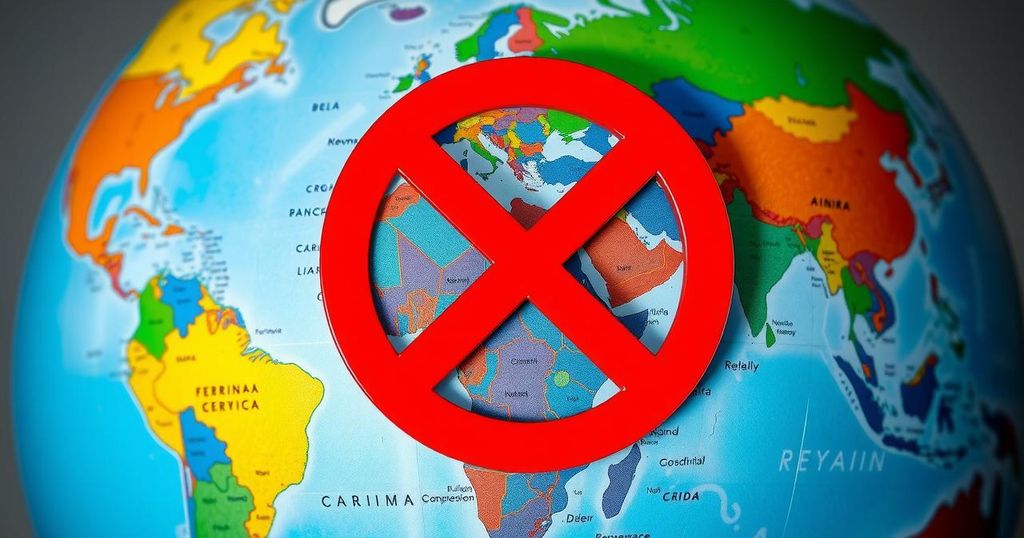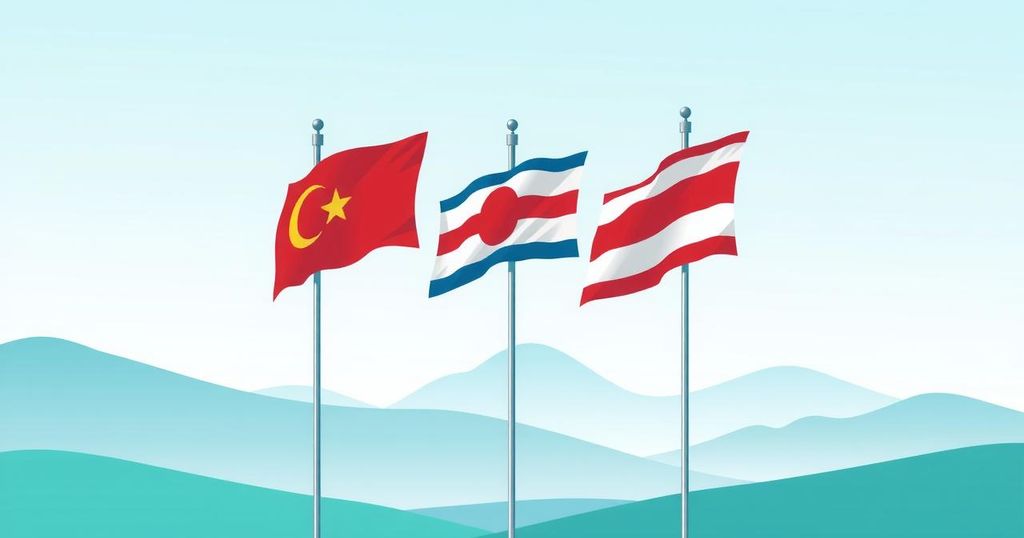President Donald Trump has proposed an expanded travel ban affecting 43 countries, structured in a three-tier system to enhance national security. This proposal, rooted in a directive from January 20, aims to limit entry from high-risk nations through categorization into red, orange, and yellow lists based on screening efficacy. Countries are given a chance to improve their vetting processes before final classifications are determined.
President Donald Trump has announced a proposed travel ban aimed at 43 countries as part of a new three-tier system. This initiative is articulated in an executive order signed on January 20, which instructs cabinet members to identify countries whose citizens may face travel restrictions to the United States due to insufficient vetting and screening information. This move is a continuation of a previous ban from Trump’s first term, emphasizing national security by restricting entry from identified high-risk nations.
The plan, developed by the U.S. State Department, is currently in draft form and may still be subject to modification before finalization. The proposed list categorizes countries into red, orange, and yellow tiers to signify the level of restriction needed for each nation. Although no final determinations have been made, officials are reviewing the draft list’s accuracy and assessing which nations require enhanced scrutiny.
The “red” list comprises 11 countries whose citizens would face an outright ban from entering the U.S., due to significant inadequacies in their screening and vetting processes that pose national security risks. Conversely, the “orange” list features 10 countries with limited restrictions, necessitating further vetting measures such as in-person interviews for visa applicants. The countries designated in these lists have been flagged for various deficiencies in their vetting practices.
The “yellow” list encompasses 22 nations, predominantly from Africa, which have a 60-day window to rectify issues related to their vetting and screening procedures. Failure to improve may result in these countries being escalated to the more restrictive red or orange categories. Overall, this travel ban reflects Trump’s persistent objective to fortify U.S. borders against potential security threats.
This initiative follows the reversal of travel bans by former President Joe Biden on his first day in office in 2021, positioning the current proposal amidst ongoing debates surrounding U.S. immigration policies and the nation’s traditional stance on welcoming individuals from diverse backgrounds.
In conclusion, President Trump’s proposed travel ban targets 43 countries, categorizing them into red, orange, and yellow lists based on their vetting and screening processes. This measure is aimed at bolstering national security and restricting entry from high-risk nations. As the proposal progresses, its implications for U.S. immigration policy are likely to provoke significant discussion and analysis, particularly in light of the previous administration’s reversals.
Original Source: www.travelandtourworld.com




